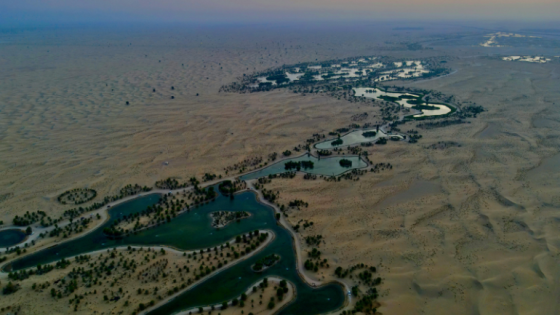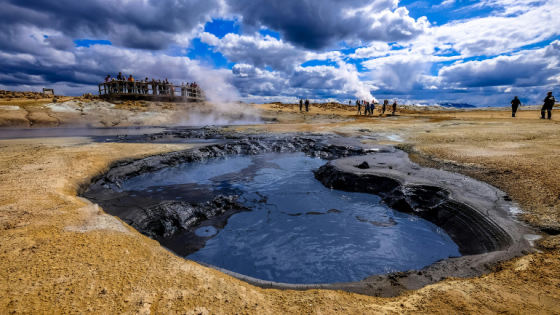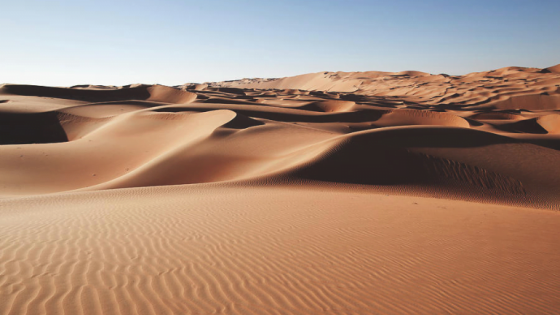Contents
- 1 UAE Natural Wonders
- 2 Incredible Natural Sights in Abu Dhabi
- 3 Al Ain Oasis
- 4 Al Wathba Fossil Dunes
- 5 Al Mirayr Forests
- 6 Al Wathba Wetland Reserve
- 7 Jebel Hafit
- 8 Jebel Hafeet Beehive Tombs
- 9 Liwa Oasis and Tal Moreeb
- 10 Mangrove Forests
- 11 The Saadiyat Reef
- 12 The Shuweihat Island
- 13 UAE Natural Attractions in Dubai
- 14 Wadi Ghalilah
- 15 Big Red in Dubai
- 16 Hatta Mountains Dubai
- 17 The Green Planet
- 18 Al Qudra Lakes
- 19 The National Ecotourism Project
If you’re seeking destinations with UAE natural wonders, wait to rule out Dubai and Abu Dhabi. The UAE’s two famed city-states are home to expanding clusters of skyscrapers and man-made marvels, including the iconic Burj Al Arab, Palm Jumeirah, Yas Island, and more. Of course, the steel charms and overall feeling of luxury are alluring, attracting over ten million visitors last year alone. However, Dubai and Abu Dhabi have more to offer than just that. These areas are also home to UAE natural wonders, mostly pristine and unspoiled by man or machine.
Read more: UAE Desert Landscapes: Experience Dubai Royalty in Photography
UAE Natural Wonders
Flora, desert, and wildlife contrast the slick pictures that the UAE presents. There are some fantastic camping sites in the desert surrounding Dubai. Enjoy glamping in the silent desert, gazing at the stars, and experiencing Bedouin hospitality and culture. Wego, the leading travel search company in the Middle East and UAE, will help you reach these top 15 natural sites in Abu Dhabi and Dubai by providing the most affordable flights and hotels.
Read more: UAE Architecture: Modern Marvels and Vernacular Traditions in Dubai
Incredible Natural Sights in Abu Dhabi
Abu Dhabi is a land of brilliantly mixed opposites, with old and new worlds, deserts, island networks, and lush green oases juxtaposed against hyper-modern towerscapes and future-tech-enabled infrastructure. Many marvels exist within its limits, yet they are frequently inaccessible. The gorgeous natural ones are easily ignored. This lists some of our favourite Abu Dhabi natural wonders and where to locate them.
Read more: UAE Green Spaces; Nurturing Nature Amidst Urban Landscapes
Al Ain Oasis
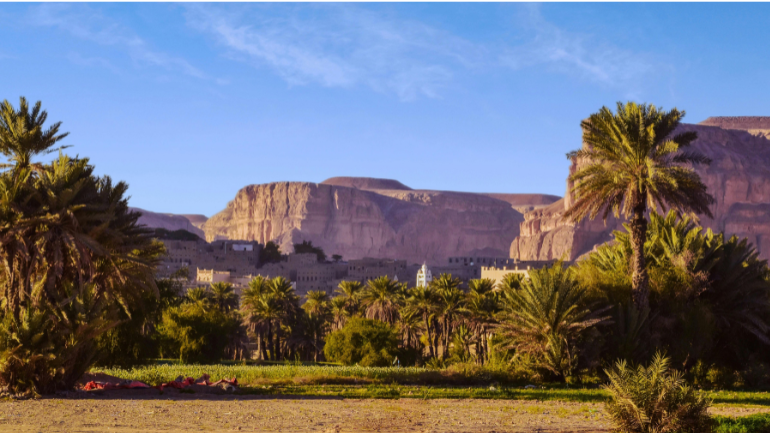
Al Ain, often known as “The Garden City,” is a great place to start if you seek green. This 1,200-hectare desert oasis amid Al Ain was designated a UNESCO World Heritage site in 2011. It has around 147,000 date palms and trees that produce mangos, oranges, bananas, figs, and jujube. Its fanciful shaded walkways beneath fractal canopies starkly contrast Abu Dhabi’s urban jungle. There is also an Eco-Centre that provides information about the oasis’ conservation initiatives and a historical overview.
Read more: UAE Oasis Locations; Desert Oasis Al Ain Oasis Liwa Oasis locations oases in the UAE
Al Wathba Fossil Dunes
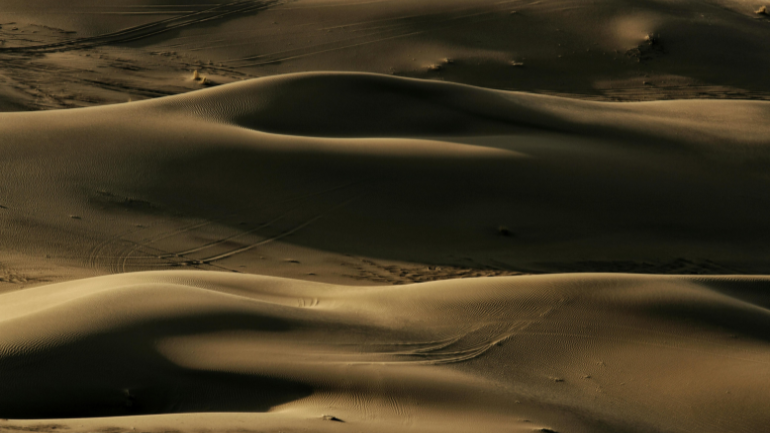
The UAE’s deserts are full of treasures, but few can match the ethereal beauty of Al Wathba’s fossil dunes. These naturally occurring monoliths are thrusting, jagged reminders of the emirate’s historic geological past, formed over the last 120,000 years. It is a short distance from the Al Wathba Wildlife Reserve, which has about 1,700 fossil dunes and has been designated a protected landmark. The Al Wathba Fossil Dunes Protected Area includes a tourist centre, a viewing area, a theatre, and 7 kilometres of hiking trails marked with educational signage describing these unique sand relics’ origins and cultural significance.
Read more: UAE Sand Dunes; Liwa Desert sand dune in Abu Dhabi & Dune Bashing in Dubai
Al Mirayr Forests
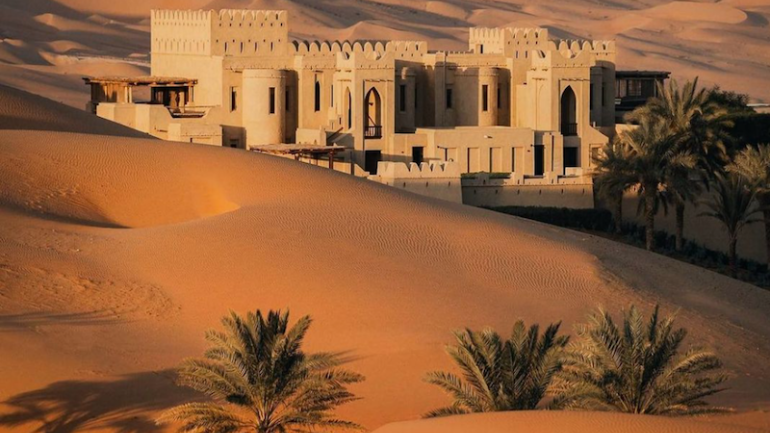
Just a stone skim away from the beautiful Qasr Al Sarab Desert Resort by Anantara; you’ll find the arresting sight of a desert forest called Al Mirayr. It’s unlikely to be the largest wooded expanse you’ll have clapped eyes on, but with its juxtaposition to the saffron-hued desert sands, it might be one of the most impressive. You’ll need a 4WD-enabled vehicle to get there, and if you fancy extending the wadi roaming, there are plenty more exciting sights to explore in the surrounding sand.
Read more: UAE Mangrove Forests; National mangroves forest in Emirates Dubai, Abu Dhabi
Al Wathba Wetland Reserve
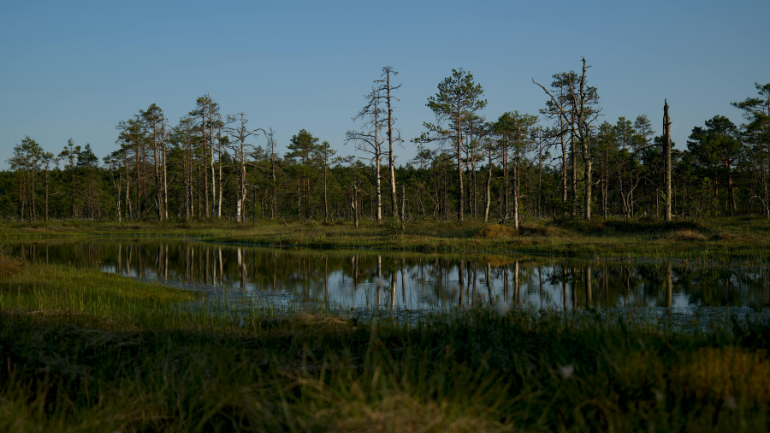
This notable site is next to the stunning Al Wathba fossil dunes and is a favoured resting place for flamingos in the autumn and spring. Flamingo City has various natural habitats, including freshwater and saltwater lakes. The area has approximately 250 bird species, 37 plants, and many marine life. The marsh is a popular bird-watching spot, with two self-guided walking trails to explore the region. There are no cafes in the area to preserve it as natural as possible, so bring your reusable water bottles as the walking paths are extensive.
Read more: The Ultimate Guide to the Best Dubai Brunch Places
Jebel Hafit
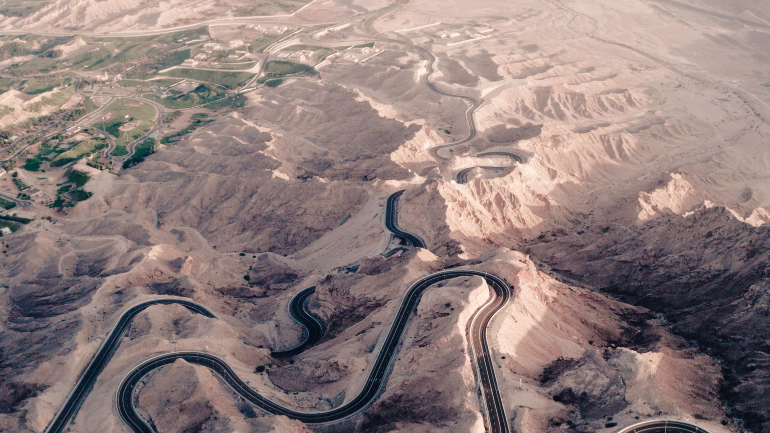
Jebel Hafit, Abu Dhabi’s tallest peak and a UNESCO World Heritage Site, is located in Al Ain, approximately 90 minutes from the capital. A campground provides tented lodging and pitches for people who want to bring their canvas and poles. You may also hire classic Bedouin-inspired tents, bubble tents with panoramic windows ideal for stargazing, and luxury dome tents with air conditioning, a television, and, most excitingly, a telescope. Tourists come here to trek, mountain bike, dune buggy, ride horses and camel sand, and enjoy the rare fresh air and lack of light pollution, contributing to the ideal astronomy circumstances. Wonders above and wonders below.
Read more: UAE Conservation Biology: United Arab Emirates Winning Wildlife Conservation Efforts
Jebel Hafeet Beehive Tombs
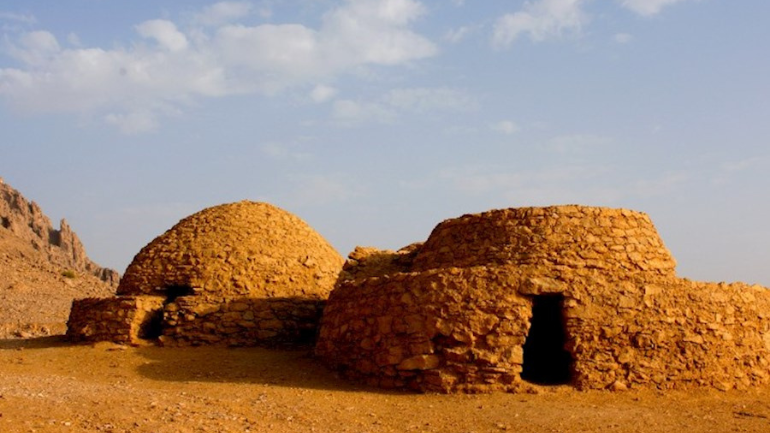
The ancient tombs at the foothills of the UNESCO World Heritage Site reflect the beginning of the Middle East’s Bronze Age. 5,000-year-old structures and evidence of pottery vessels and copper objects were discovered here, demonstrating the importance of marine trade throughout the Arabian Gulf even then. You may explore the park’s magnificent natural surroundings on a mountain bike, horse, or camel. Discover archeological and historical artifacts that illustrate the story of this unique area’s ancient inhabitants.
Read more: UAE Climatic Zones: Knowledge Portal to Dubai’s Weather
Liwa Oasis and Tal Moreeb
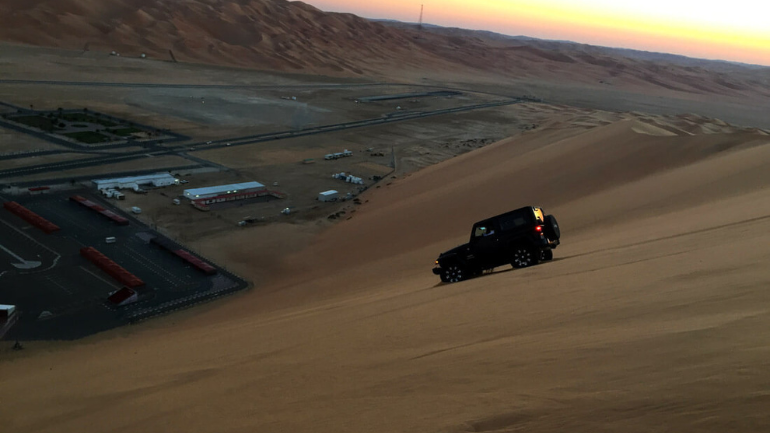
The Nahyan family and the Bani Yas clan have their ancestral home at Liwa Oasis, located on the northern side of Rub Al Khali (the Empty Quarter). The Liwa Oasis area highlights a 100-kilometre length of the desert where the dark green of date trees stands out against the amber sands. This is feasible because the water table is raised and near the surface. There are walled sections, recreated forts and watchtowers, and a collection of extremely massive dunes, including Tal More’eb, which stands 300 meters tall and is one of the world’s tallest.
Mangrove Forests
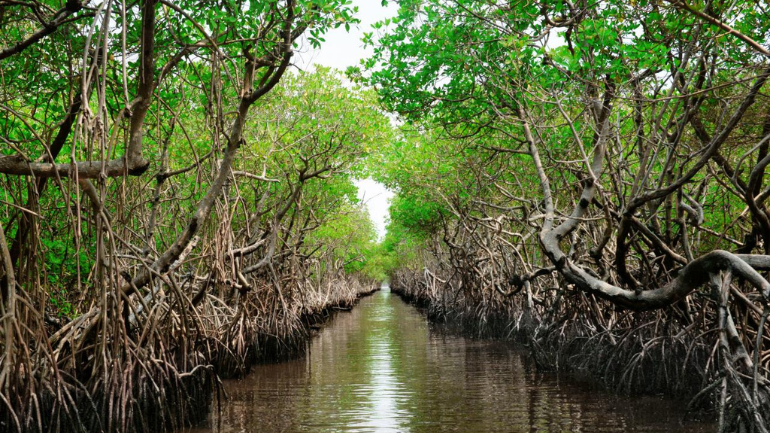
Jubail Mangrove Park opens in January 2020, allowing visitors to explore one of the region’s most unique natural habitats. The mangroves, discovered on a small outcrop of Jubail Island, quickly became popular with locals, residents, and tourists. It has a meandering 2.3 km boardwalk and is about a 20-minute drive from downtown Abu Dhabi. Herons, flamingos, turtles, gazelles, crabs, and other fascinating creatures live in the park. There are numerous ways to explore this fantastic turquoise expanse, including ranger-led, guided boardwalk, kayak, and e-canoe tours through the mangroves.
The Saadiyat Reef
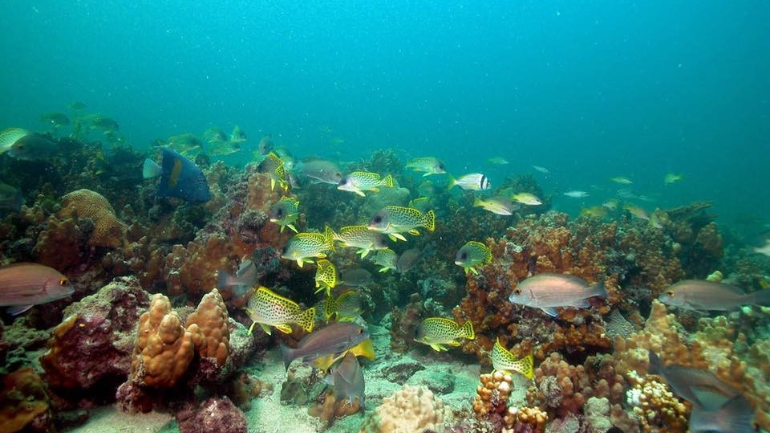
The emirate’s coral reefs undergo a vast rehabilitation effort overseen by the Environment Agency — Abu Dhabi (EAD). Even with the effort in full gear, several dive locations in the Abu Dhabi archipelago provide safe and legal access to coral reefs. Multiple dive companies offer chartered trips to areas such as Philippe’s Reef and Saadiyat Reef, allowing snorkelling and scuba sports. While the variety and vibrancy of the reef’s colours may not match those found in some of the world’s most recognised dive sites, the marine life you’ll encounter while navigating them is mask-misting. Turtles, for example, are frequently seen.
Read more: UAE Geography Facts: Intriguing Discoveries
The Shuweihat Island
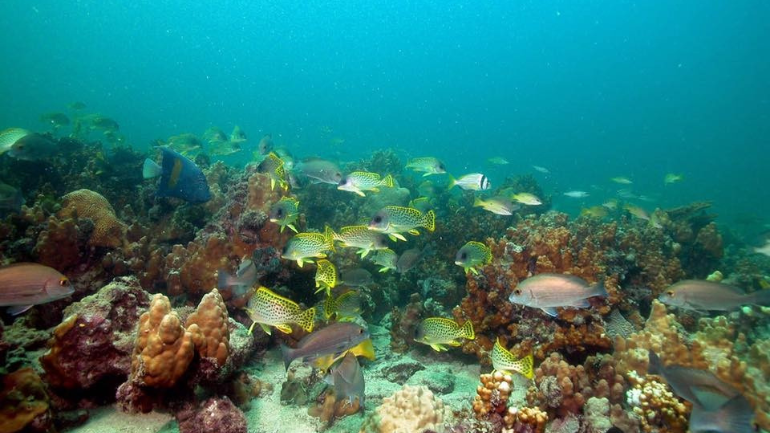
Red rocks, erosion-carved cliffs, and lovely beaches border this breathtakingly gorgeous island. Unfortunately, public access to the island is forbidden due to pollution and mistreatment. If you make the trip, you can admire the vista from a distance.
Read more: Embark on a Discoverable Journey Through the UAE’s Geography and Climate
UAE Natural Attractions in Dubai
The UAE natural wonders in Dubai are another compelling reason to include the UAE on your Middle Eastern trip itinerary. When most people think of Dubai, they envision gleaming concrete jungles, stunning artificial islands, and never-ending opulence. This is understandable, but Dubai’s abundant natural wonders are also available. Many visits to the UAE include opportunities for hiking, birdwatching, sandboarding, camping, and other outdoor activities in Dubai’s beautiful natural surroundings.
Read more: UAE Climate and Tourism: A Perfect Blend of Nature and Adventure
Wadi Ghalilah
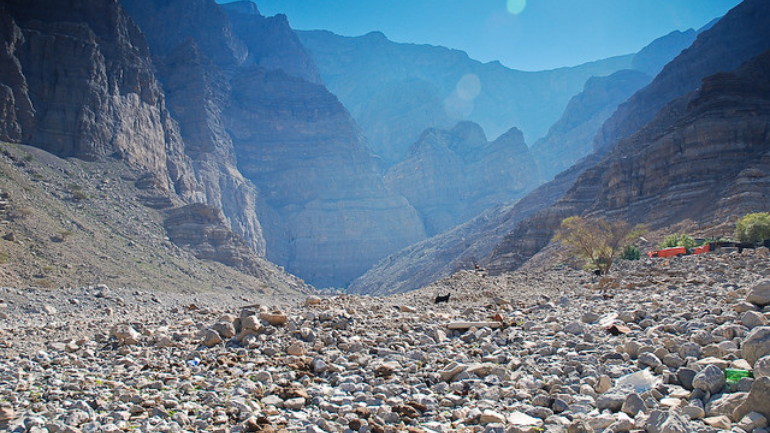
Wadi Ghalilah is a famous walk and a favourite natural destination in Dubai. The so-called Stairway to Heaven is a mountain trail connecting an Oman town to Ras al Khaimah. Its steep rocks, limited routes, and winding cliffs entice skilled rock climbers and mountaineers to ascend 1,500 meters. It is easily accessible by automobile from Dubai and can be hired through Renty. This hike is only for some. However, if you have the stamina, climbing skills, and sensibility to stay safe until you reach the summit, you will be rewarded with a breathtaking view and possibly some bragging rights.
Read more: UAE Climate and Agriculture; Sustainable Agriculture Innovation, Climate Farming & Food Future
Big Red in Dubai
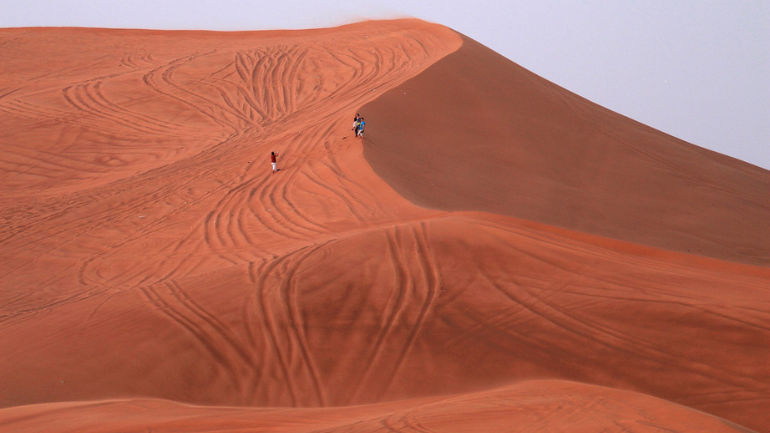
The Big Red Dune, also known as Al Hamar, is a popular hangout for locals and visitors interested in adventure and natural attractions in Dubai. Travel along the Dubai-Hatta expressway toward the desert and see Mars on Earth. I thought I’d landed on another planet the first time I went. The 100-meter-high dune provides an ideal setting for dune bashing, sandboarding, and other extreme activities. Not much of a daredevil? You may still enjoy yourself by watching the adrenaline addicts battle it out. But the Big Red Dune is more than simply a playground for desert sports fans.
Read more: UAE Desert Climate; Guide to Emirates Climate Change and Weather in the UAE
Hatta Mountains Dubai
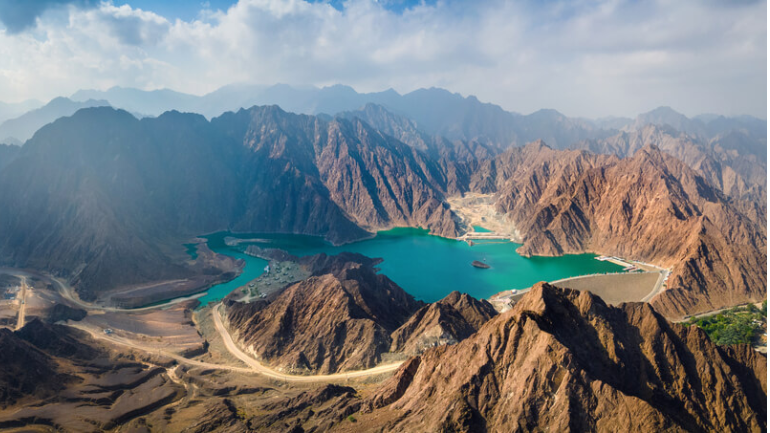
The dune’s rich tint, a natural curiosity due to its high iron oxide content, provides a mesmerisingly creepy background as you explore this vast expanse. To avoid being sunburned, bring water and arrive early in the morning! A visit here is one of the best things to do in Dubai. If you want to do various activities in one day, consider taking a trip from Dubai. This tour includes 4×4 rides, sandboarding, and camel rides.
Read more: UAE Temperature Trends; A Closer Look at Climate Change
The Green Planet
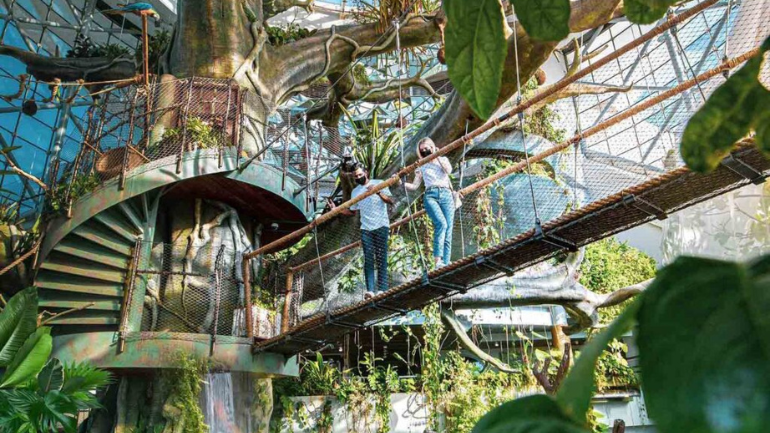
The Green Planet is an ambitious project that depicts scenes from nature, including lizards, sloths, snakes, birds, and other creatures that coexist on all five floors of the biodome. It’s not exactly natural, but a tropical rainforest exists behind a glass box in the heart of a modern city. The temperature and humidity levels are also adjusted to replicate the sensation of strolling through a tropical rainforest. You may walk around each habitat level by level, examine the creatures, and even interact with them as toucans, macaws, and other exotic birds fly through the branches. The entire experience can be unreal, but it is enjoyable regardless. It is one of the natural wonders in Dubai that you must visit.
Read more: UAE Mountains; Emirates Mountains Jebel Jais Hajar Mountain in Ras Al Khaimah
Al Qudra Lakes
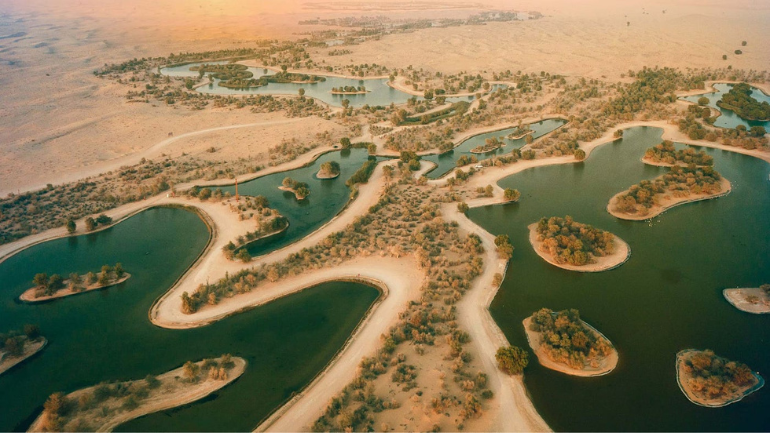
Al Qudra Lakes is a 30-minute journey from Dubai and will transport you to another universe. You can see foxes and wolves near these lakes and birds such as swans, ducks, and flamingos. Almost 200 bird species are here, including the endangered Steppe Eagle and Asian Houbara! Take a tour or explore on your own. The lakes are a popular picnic and BBQ place, so you won’t have to go alone. Many people camp here, allowing you to see the sunset and daybreak.
Remember that, other than Love Lake, there are no amenities here. Bring as much food and drink as you will need. If you intend to drive off-road, you should have a suitable four-wheel drive car. If you do not have a Jeep, you can still tour Al Qudra. During this journey, you’ll look for rare birds and other species in the Al Qudra Lakes and experience true Bedouin living at an Al Marmoom Oasis camp.
Read more: UAE Karst Topography; geological karst in Ras Al Khaimah Northern United Arab Emirates
The National Ecotourism Project
The National Ecotourism Project (The UAE’s Natural Wonders) is a three-phase national initiative that aims to promote ecotourism throughout the seven emirates and establish the UAE as a major ecotourism destination. The project’s initial phase raises awareness of the UAE’s 43 natural reserves, which account for 14% of the country’s land. In July 2018, the Ministry of Climate Change and Environment (MOCCAE) launched a three-phase national project called ‘The UAE’s Natural Wonders’. The project intends to promote ecotourism throughout the seven emirates and establish the UAE as a central ecotourism hub.
The project’s initial phase raises awareness of the UAE’s 43 natural reserves, which account for 14% of the country’s land. In keeping with the project’s concept, the ministry launched an ecotourism microsite, an Eco-Tourism UAE app available on iTunes and Google Play, and an eBook. These materials provide information, photographs, and films that illustrate the biodiversity of the country’s protected regions.
To gather the film, MoCCAE workers travelled 2,700 kilometres and shot 380 hours on the ground and 350 hours with drones. The ministry plans to work with travel agents and airlines to incorporate these locations in promotional packages for the UAE. The project’s next phase will integrate the UAE’s mountains and sea.
Read more: UAE Islands and Archipelagos; 10 Artificial Archipelago Islands in Dubai, Abu Dhabi
Where is the greenest place in the UAE?
Oases are the best green spots in the desert, and Al Ain is the best oasis in the UAE. It covers about 1,200 hectares in Abu Dhabi, also known as Green City. Visitors can walk along shady pathways lined with about 150,000 date palm trees.
What place in the UAE has the best natural scenery?
Discover 23 stunning nature areas in the UAE, including Al Hayer Forest. This truly hidden gem consists of several hundred trees buried between Dubai and Al Ain in the desert.
1. Al Rafisah Dam.
2. Al Sinniyah Island.
3. Al Wathba Salt Lake.
4. Al Zorah Natural Reserve.
5. Dibba Rock.
6. Fossil Rock.
7. Green Mubazzarah.
What is the nature of the UAE?
The UAE is predominantly an arid region with enormous sand deserts, but it also has dunes, oases, rock mountains, valleys, marshes, mangroves, and salt plains. The oasis is essential for date palms; most oases are located in the emirate of Abu Dhabi.
What are the exotic places to visit in UAE?
There are exotic places to visit in the UAE as follows:
1. Burj Khalifa.
2. Dubai Dolphinarium.
3. Dubai Fountain.
4. Dubai Miracle Garden.
5. Burj Al Arab.
6. Desert Safari.
7. Dubai Marina.
8. Emirates Hotel.
9. Ferrari World.
UAE Natural Wonders, from the lush Al Mirayr forests to the mesmerising Al Wathba Fossil Dunes, are a testament to Abu Dhabi’s rich natural heritage. The Dubai Mall Aquarium and the tranquil Al Ain Oasis further enhance the country’s unique natural wonders. So, when in the UAE, see these natural attractions. They will leave you in awe of the country’s natural beauty.
